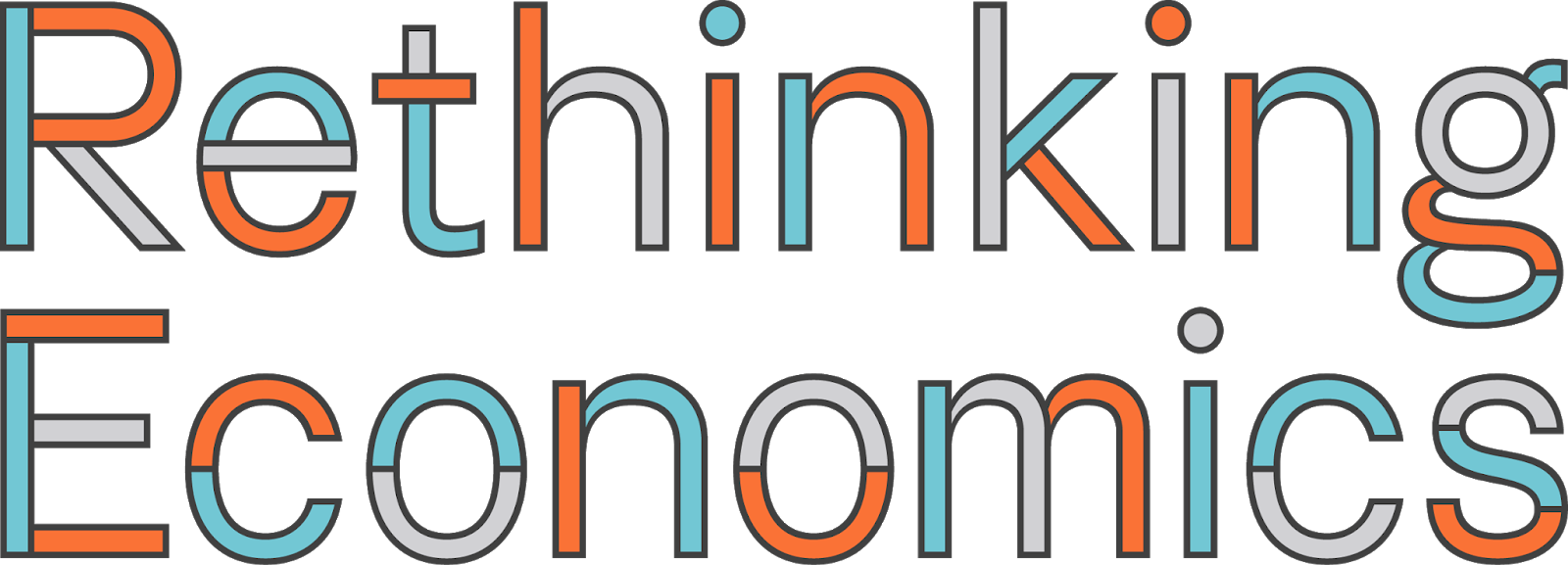A Time for Precaution
Rethinking Economics, 2020
Pluralist Showcase
In the pluralist showcase series by Rethinking Economics, Cahal Moran explores non-mainstream ideas in economics and how they are useful for explaining, understanding and predicting things in economics.


A Time for Precaution
By Cahal Moran
I’d been planning to write about cost-benefit analysis versus the precautionary principle, which I teach to my students, at some point in this series but given the outbreak of covid-19 and the dramatic effect it has had on all of our lives, I thought it would be sensible to bring this post forward. For those of you not familiar with this debate, it concerns the best way to appraise policies - that is, determine if they are worthwhile before they’ve happened. In economics the undisputed king of methods is cost benefit analysis, which simply estimates whether the ‘goods’ of a policy (increased income, health, happiness) will outweigh the ‘bads’ (financial, environmental and health costs). The main alternative is known as the precautionary principle, which recommends doing your best to avoid a very bad outcome, especially in situations where the potential courses of action are plagued by uncertainty. The onset of covid-19 seems like a vindication of the precautionary principle in the realm of health, but I’d like to look at the debate between them more generally before returning to the pandemic.
A Short Introduction to Cost-Benefit Analysis
There is an intuitive appeal to cost-benefit analysis (hereafter CBA): when deciding on the best course of action, is it not sensible to see whether the benefits are higher than the costs? If we can assess these benefits and costs objectively then we have a decision rule which cuts through reams of political sophistry, special interests, and confusion to give us a crystal-clear number that tells us the best course of action. In order to get this number CBA attempts to translate into money terms things which are usually thought of as outside the market including health, the environment, culture, and community. CBA assumes that even though these things are vastly different – in the jargon, they are incommensurable – we can make some progress in comparing them.
As many of these are free at the point of use researchers try to measure individuals' valuation of them through their 'Willingness to Pay'. The two dominant approaches are stated preference - asking people directly how much they value their local park - and revealed preference, which infers the value from adjacent market activity. For example, the value of a local park might be inferred from the higher prices of the houses nearby, or the travel costs people pay to get there. This can then be compared to the money benefits from, say, a new set of flats in place of the park. Costs and benefits in the future are 'discounted' - reduced to account for the fact that we place a higher value on the here and now – and there are different ways of splicing the results to get a final number.
It goes without saying that in practice, CBA throws up a lot of challenges. Arguably the best way to critique CBA is simply to carry one out and witness for yourself all of the arbitrary choices that go into producing that final number. From the wording on surveys measuring stated preference to the statistical techniques used to recover revealed ones, every choice is going to have a notable effect on the final value and possibly the policy decision. Even after the legwork to get costs and benefits, one has to decide on how far to extend the analysis into the future, and how much to discount. There are more and more ways to address the problems that arise, but they are especially pronounced when the analyst has an incentive to push a certain outcome, and as CBA is used so heavily for policy such instances are not hard to come by.
Despite this, there are a number of positive uses of CBA out there. Arguably the most prominent contemporary advocate of CBA is Cass Sunstein, who co-wrote the book Nudge with Richard Thaler and following on from that became a kind of technocrat-in-chief for the Obama administration. In Sunstein’s more recent book The Cost Benefit Revolution, he tracks the rise of the principle as it became mandatory for new regulations under the Reagan administration in the 1980s and through its growth to today, and ardently defends it against critics. He claims that CBA has resulted in the implementation of many beneficial regulations including protection of the ozone layer and the reduction of lead in petrol, but equally has reduced troublesome regulations, as illustrated by the Obama administration’s requirement to systematically review old regulations with CBA and bin them if they fail the test. In Sunstein’s estimation, this shows it’s an even-handed principle which has led to sensible policy decisions.
Sunstein points out that without CBA, governments can spend wildly different amounts of money in different departments to achieve the same outcome, with the U.S. Government spending $100,000 to save a human life in some areas and millions in others. He acknowledges many of the faults with CBA but calls for more and better data to remedy them. There are also examples of good uses of CBA not mentioned by Sunstein - in the UK, the NHS uses the National Institute for Health and Care Excellence (NICE) to decide which drugs to buy. They adopt a version of CBA where they estimate the additional ‘Quality Adjusted Years of Life’ - or QALYs – from a new drug. This is based on the notion that a year of life in a coma, or terrible pain, is less valuable than a year of life fit and healthy. NICE try to get the most QALYs per £ by only buying the drugs and treatments which score beyond a certain threshold.
It’s an easy one to balk at but in my opinion the method is entirely justified for a couple of reasons. The NHS has limited resources and as they are in the realm of health, it’s unavoidable that the decisions they make will result in the death of some while others are saved. There was a famous example where public outrage at NICE’s denial of treatment to a little girl sparked the agency to pay for her treatment. Researchers later estimated that 5 people died per person saved, due to the decision displacing funds from more effective treatments. Furthermore, although different health conditions enter into QALYs they remain within the realm of health conditions, adding a degree of commensurability or what Sunstein calls “health-health trade-offs”. It is reasonable to compare suffering from pneumonia to suffering from a broken leg, at least moreso than comparing either of those to suffering from missing out on a trip to a theme park. For this reason, I see CBA has having scope within well-defined domains and where difficult decisions are unavoidable.
A Short Introduction to the Precautionary Principle
According to Frank Ackerman and Rachel Massey, the Precautionary Principle (hereafter PP) is defined as "when an activity poses threats of serious, irreversible harm to human health or the environment, we should act to prevent that damage - even if science has not fully worked out the details of the relevant cause and effect relationships". Like cost benefit analysis, the precautionary principle has some intuitive appeal: in situations where people aren’t sure what the best course of action is, they’re likely to choose a safe option if possible. For example, if you were unsure about whether the trains were running and could not know until you got to the station, you'd be likely just to take the car even if you'd ideally prefer the train. This preference for certainty is a basis of the well-known Ellsberg paradox in decision science.
Despite Sunstein’s ‘revolution’ in CBA and much to his ire, the PP remains policy in a number of areas including EU policy and the Rio Declaration on the environment. In The Economics of Toxics and Precaution Ackerman argues in favour of PP against CBA using examples such as the Clean Air and Clean Water acts, which were justified using the PP at the time and are widely favoured today - whereas CBA would likely have gone against them. He also disputes examples held up by Sunstein as positive instances of CBA: regulation of the lead content of petrol, for example, was difficult to justify with the knowledge at the time. Even now CBA analysts disagree, with Randall Lutter estimating that because parents devoted so few resources to eliminating lead from their children’s bloodstreams, they didn’t value this highly so lead wasn’t worth eliminating from petrol! It has also been argued through the logic of CBA that cigarette smoking should be subsidised as cigarette smokers die younger, saving the healthcare system. Evidently, there is something amiss in using pure CBA to make decisions. In contrast, following the PP would have meant taking seriously the health problems among exposed workers – the “canary in the coal mine” for toxins - along with other indicative evidence.
There is room for reconciliation between PP and CBA if they just apply in different scenarios. In an area like public transport there are few serious dangers and despite various uncertainties economists are pretty good at predicting passenger numbers (I'll cover how in a later post for this series). Cost-benefit analysis is reliable here and I’ve not seen critics dispute its use for something like High Speed 2; the fact that the Government made a hash of their CBA in practice is another issue. Another area the PP seems inapplicable is excessive caution in the face of innovation. Sunstein discusses the mistaken panic over mobile phones, where precaution led people to assume they "fry your brain" without any evidence whatsoever. Certainly it seems public outcry over new inventions can be excessive, and in my opinion good application of the PP should require some demonstration of likely harm by scientists, which has not been the case for digital technology.
Yet Sunstein makes a more general case against PP on the grounds that it is self-contradictory. He states that if one aims to avoid harm at all costs, this leads to paralysis because every course of action is associated with risks. A good example of his is the choice between nuclear power and fossil fuels - how can one decide using the PP when both have some risk of a catastrophic outcome (meltdown in the former case, climate change in the latter)? I’m persuaded that in areas where there are no easy choices, the PP does not have much to say. However, in this example one could argue that applying the PP at the point these technologies were introduced could have pushed us down a different path in the past. It is also a false choice these days because renewable energy is widely available. Sunstein’s attempt to argue that every regulatory decision carries serious risks to life due to the costs of regulation is more speculative and has been convincingly rebutted by Ackerman and Massey, since regulation has had positive economic effects too.
In my opinion an advantage of the PP over CBA is that it takes incommensurability seriously. Some health, environmental, or economic risks are severe and irreversible for those that experience them. In contrast, expanding electricity production can always be done another way, even if at greater expense. Costs in a realm which is easily replaceable – and this is often the case for costs to business – may be considered on a different plane than costs to children’s health and IQs. David Doniger put it best when he said “that some must die so that all can eat is one thing; that some must die so that all can have see-through food packaging is another.” Additionally, some risks are self-incurred – such as going on a ski holiday – while others are involuntary, such as that from a pandemic. The PP reigns when one course of action poses a serious risk to people who cannot avoid and may not even know about the risk, while the worst possible cost is just sticking with the status quo. Noam Sachs interprets the PP best: “to commence with an activity or to introduce a product, the proponents must prove “no substantial risk” to human health”.
Another way to reconcile the two is to think of the PP as CBA when at least one plausible future scenario imposes costs which are effectively infinite. This way, any feasible cost to prevent this outcome will be justified. Martin Weitzman, who sadly committed suicide after not receiving the Economics Nobel Prize last year, popularised this notion in the context of climate change: there are reasonable scenarios under which life on earth as we know it ends completely. And this is where precaution really comes into its own: not just with irreducible uncertainty, but with non-linearities, and the two often come hand in hand. As we know from the exponential growth of covid-19 cases, things can seem perfectly fine until, suddenly, they aren’t. Likewise, measures to prevent such an occurrence can seem excessive and expensive at the time they are enacted, which makes it hard for the public to accept them. Interestingly, Sunstein seems to agree in this area, though he sees CBA as nesting PP in this special case.
Save cost-benefit analysis for the linear, predictable areas such as transport and well-defined “X-X trade-offs”. In the arenas of contagious disease, the environment, and most likely finance (think Hyman Minsky), it is far better to be cautious. With the outbreak of covid-19, we have to ask as a world whether our health systems could have done more to insure against this worst-case scenario, both in the realms of research into preventative measures for potential threats (coronaviruses have been known as a threat for a long time), and in the emergency capacity of our hospitals. It is, perhaps, time to consider making our economic system more resilient in the face of uncertain threats.
There is still so much to discover!
In the Discover section we have collected hundreds of videos, texts and podcasts on economic topics. You can also suggest material yourself!

